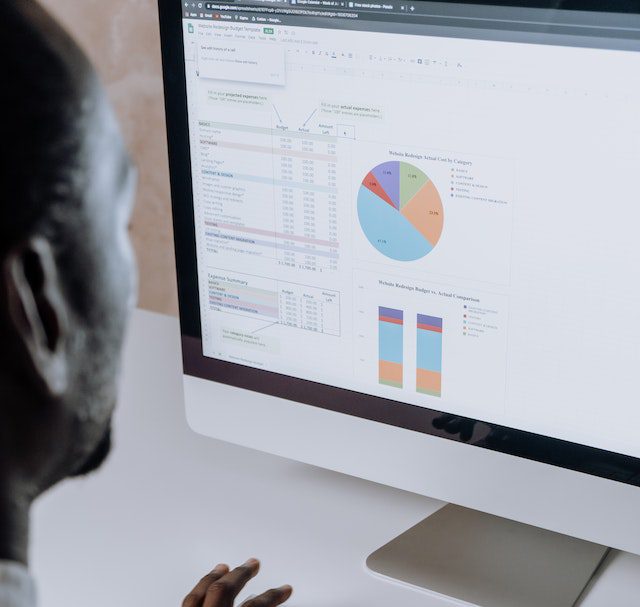Struggling to pay off multiple loans while living paycheck to paycheck and wondering how to pay the debts quickly?
You’re not alone. Thousands of young Kenyans are trapped in this exact cycle – juggling bank loans, mobile lending apps, and personal debts while barely having enough left for basic needs. The stress is real, and those minimum payments feel like you’re getting nowhere.
Here’s the truth: If you continue to rob Peter to pay Paul, it means you’ll be stuck for years, potentially paying double or triple what you originally borrowed in interest alone. But there’s a way out.
In this guide, you’ll discover 5 proven strategies that can help you pay off your loans 40-60% faster than traditional payment methods. These aren’t get-rich-quick schemes – they’re practical, tested approaches that have helped hundreds of debt-burdened Kenyans regain control of their finances and start building wealth instead of just surviving month to month.
Read Next: Best Ways To Pay Off Your Personal Loans Early in Kenya 2025: Complete Guide
Whether you’re dealing with mobile loans, bank personal loans, or a mix of different debts, these strategies will show you exactly how to prioritize, accelerate, and eliminate your debt burden for good.
How do you manage debt in 4 easy steps?
Managing debt is not an easy task, you can summarize it into 4 simple steps listed below; Remember in managing your debts and work towards a debt-free future, be patient, persistent and consistent in your efforts. Besides. don’t hesitate to consult or a financial advisor or debt manager for professional guidance.
- Calculate Your Total Debts Load (Including Mobile Loans & Bank Debts)
- Debt Prioritization Save Thousands by Paying in the Right Order
- 3 Proven Ways Kenyan Youth Pay Off Loans 2X Faster (Without Side Hustles)
- How to Never Fall Into Kenya's Digital Lending Trap Again(3 Simple Rules)
- Final words
- FAQs on best Ways To Pay Off Loan Early
Calculate Your Total Debts Load (Including Mobile Loans & Bank Debts)
The first step in managing your debt is to assess your debts. This should include knowing the type of debt, the creditor, the interest rate, and the minimum monthly payment.
Assessing debt is not a one-time task, it’s important to review your loans periodically to ensure that you are making progress and adjust your strategy accordingly. Remember that the key to managing debt is to be consistent, persistent and remain patient.
How do you assess your debts? The process involves 3 steps;
- Listing all your debts.
- Evaluate each debt terms and conditions
- Calculate all your debt amount
These steps are further explained below
Create a Debt Repayment Schedule That Actually Works
The first step in assessing your debt is to create a list of all your loans. This may include personal loans such credit card debt, student loans, online loans such as Tala loan, log book loans, and any other type you may have.
For each debt, make sure to note down the creditor, the interest rate, and the minimum monthly payment.
You can use a spreadsheet such as excel or a notebook to keep track of your debts, or you can also use a budgeting app to help you organize your information.
Debt Evaluation 101: Which Loans Are Costing You Most?

Once you have a comprehensive list of your debts, it’s important to understand the terms and conditions of each one.
Make sure to read the fine print and understand the interest rate, any fees, and the repayment terms. It’s also important to know when the debt is due and when the interest rate will change.
This information will help you prioritize which debts to pay off first and develop a plan to pay off your debt.
How to Calculate Your True Debt Total (Hidden Costs Included)
With all your debts listed and the terms and conditions understood, the final step in debt assessment is to calculate the total amount of debt you owe. Add up the outstanding balance of all your debts to get your total debt. The number is important to have a clear understanding of the amount of debt you’re dealing with in order to create a plan to pay it off.
Once you have a complete list of your debts, you can begin to assess your financial situation and understand the terms and conditions of each debt.
Debt Prioritization Save Thousands by Paying in the Right Order
Which is the best way to pay off multiple debts? More interestingly, which of your loans should be paid first and why? How do you Prioritize which debts to pay First ?
Once you have a clear picture of your debt, the next step is to prioritize which debts to pay off first. There are two popular methods for prioritizing debt, the “snowball” method and the “avalanche” method.
The Debt Snowball Method: Quick Wins That Build Momentum
The snowball method involves paying off the smallest debt first and make minimum payments on the larger debts. Once the smallest debt is paid off, the money that was used to make payments on that debt is then applied to the next smallest debt. This continues until all debts are paid off.
Benefits of snowball debt payment method
- It will give you sense of accomplishment and motivation as small debts are paid off quickly.
- You will stay motivated and on track with your debt repayment plans.
- It can help you to build momentum and reduce the overall amount of interest paid on the debts.
Challenges of the snowball loan repayment method.
- It may not be the most efficient if you have to delay paying some large debts with a high interest rate, it may be more beneficial to pay that off first, rather than the smaller debt with a lower interest rate.
- The method can be less effective for those with a significant amount of debt, as it may take a long time to pay off all the debts.
The Debt Avalanche Method: How to Save the Most Money on Interest”
The avalanche debt payment method, on the other hand, involves paying off the debt with the highest interest rate first. You will then make minimum payments on the other debts. Once the debt with the highest interest rate is paid off, the money that was used to make payments on that debt is then applied to the next highest interest rate debt. This continues until all debts are paid off.
Benefits of the avalanche Debt repayment method
- It is more efficient than the snowball method. When you pay off the debt with most expensive or interest rate first, it can save a significant amount of money over time.
- It can also help to reduce the overall amount of time it takes to pay off all the debts.
Challenges to the avalanche loans repayment method
- It may not provide the same sense of accomplishment and motivation as the snowball method.
- It can be costly to pay off the highest interest rate debt first, as it might take a long time.
Whichever loans payment method you choose, the goal is to pay off your debts in a strategic and efficient way.
3 Proven Ways Kenyan Youth Pay Off Loans 2X Faster (Without Side Hustles)
How can you pay your loans faster? There are several strategies that you can use to pay off your debt faster. In this post, we’ll discuss 3 strategies for paying off debt fast, Loans consolidation, negotiating with creditors, and increasing your income.
- Loan Consolidation allows you to combine multiple debts into one loan with a lower interest rate. This can help you save money on interest payments and make it easier to keep track of your debt repayment plan.
- Negotiate with creditors involves working with you to review the loan terms and conditions. It can include ways to reduce your interest rates or create more favorable repayment plans such as extending loan period. This can help you save money on interest payments and make it easier to pay off your debt.
- Increase your income. This can include taking on a side hustle, asking for a raise, or finding ways to boost your earning potential. By increasing your income, you’ll have more money available to put towards paying off your debt.
How to Never Fall Into Kenya’s Digital Lending Trap Again(3 Simple Rules)
Staying out of debt is just as important as paying off debt. Once you’ve achieved a debt-free status, it’s crucial to maintain it and avoid falling into the same financial traps that led you to debt in the first place. In this blog post, we’ll give you 3 tips.
- How to create a budget and stick to it
- The importance of emergency savings.
- How to avoid common traps that lead to debt.
Remember that it’s important to have a clear understanding of your financial situation, consult a financial advisor for professional guidance and make adjustments as needed.
How to Budget When Half+ Your Salary Goes to Loans
Creating a budget is one of the most effective ways to stay out of debt. It allows you to track your income and expenses, identify areas where you can cut back, and plan for future expenses.
To create your personal budget, start by listing your income and all your expenses, including fixed expenses such as rent, and variable expenses such as groceries. Next, subtract your expenses from your income to determine if you have a surplus or deficit.
If you have a deficit, you will need to make adjustments to your budget by cutting expenses or finding ways to increase your income.
Once you have a budget in place, it’s essential to stick to it. To do so, it’s helpful to track your spending and make adjustments as needed. Automating your budgeting process, setting reminders, and creating a visual representation of your personal budget can also help you to stay on track.
Emergency Fund vs Debt: Which Should You Prioritize?
Another crucial aspect of staying out of debt is having an emergency fund. An emergency fund is a savings account set aside for unexpected expenses, such as a medical emergency, car repair, or job loss. Having an emergency fund can help prevent you from turning to credit cards or loans when unexpected expenses arise. It’s recommended to have at least 3-6 months of living expenses in an emergency fund.
5 Money Traps That Keep Kenyans in Debt (And How to Avoid Them)
There are several common traps that can lead to debt, and it’s important to be aware of them in order to avoid falling into them.
- One trap is lifestyle inflation, where people increase their spending as their income increases, which can lead to overspending and debt.
- Another trap is overusing credit cards, which can lead to high-interest debt.
- Additionally, not having an emergency fund or not having a clear understanding of your financial situation can also lead to debt.
To avoid these traps, it’s important to have a clear understanding of your financial situation, create a budget and stick to it, and have an emergency fund in place.
These 3 are the simple methods you can maintain your debt-free status and achieve financial stability.
Final words
Debt management is a crucial aspect of achieving financial stability and security. In this blog post, we’ve discussed the importance of managing debt, how to assess your debts, strategies for paying it off and how to avoid the trap again in future.
You don’t have to wait any longer, to be financially free and successful. The goal is to start managing your multiple debts today. Consult a financial advisor or a debt manager for professional guidance and make adjustments as needed. With the right plan in place, you can achieve your goals, reach financial stability and live a debt free live.
FAQs on best Ways To Pay Off Loan Early
How long does it take to pay off 500,000 KES in loans?
The repayment period depends on your monthly payment amount, the interest rate, and whether you make extra payments. For example, paying 20,000 KES per month at a 15% annual interest rate would take about 32 months to clear the debt, excluding fees and compounding. Using a loan calculator can give you a precise answer based on your specific terms.
Should I consolidate my mobile loans into one bank loan?
Consolidating multiple mobile loans into a single bank loan can simplify payments and may lower your overall interest rate, especially if the bank loan has better terms. However, compare total costs, fees, and ensure you can meet the new repayment schedule.
What happens if I can’t make minimum Loan payments per Month?
Missing minimum payments can lead to penalties, increased interest, and negative marks on your credit report. In Kenya, repeated defaults may result in being listed on the Credit Reference Bureau (CRB), which can affect your ability to borrow in the future.
Is it better to pay off small debts or high-interest debts first?
Paying off high-interest debts first (the “avalanche” method) saves you more money in the long run. Paying off small debts first (the “snowball” method) can provide quick wins and motivation. Choose the method that fits your financial and psychological needs.
Do mobile loan defaults affect my credit score in Kenya?
Yes, defaulting on mobile loans like Mshwari, Tala and others can negatively impact your credit score. Digital lenders report defaults to the CRB, which may limit your access to future credit.
Do mobile loan defaults affect my credit score in Kenya?
Yes, defaulting on mobile loans like Mshwari, Tala and others can negatively impact your credit score. Digital lenders report defaults to the CRB, which may limit your access to future credit.
Can I negotiate payment terms with digital lenders?
Many digital lenders in Kenya are open to negotiating payment plans, especially if you reach out before missing payments. Contact your lender directly to discuss options.
What’s the maximum interest rate allowed in Kenya?
The Central Bank of Kenya regulates interest rates for banks, but digital and mobile lenders may charge higher rates. Always check the lender’s terms, as some digital loans have annualized rates exceeding 100%.
How do I avoid getting blacklisted by CRB?
Make timely payments on all loans, including mobile and digital loans. If you anticipate missing a payment, contact your lender to discuss alternatives before defaulting.
How much should I pay extra toward loans each month?
Aim to pay more than the minimum required, even a small extra amount can reduce total interest and shorten your repayment period. Use a budget to determine how much extra you can afford.
Should I use my bonus to pay off debt or build emergency savings?
If you have little or no emergency savings, consider splitting your bonus between debt repayment and savings. Having a safety net can prevent future borrowing.
What if I have irregular income – which method works best?
If your income is irregular, prioritize essential expenses and minimum loan payments first. Use the “flexible budget” approach and make extra payments in months when your income is higher. Consider the avalanche method to target high-interest debts when possible.



